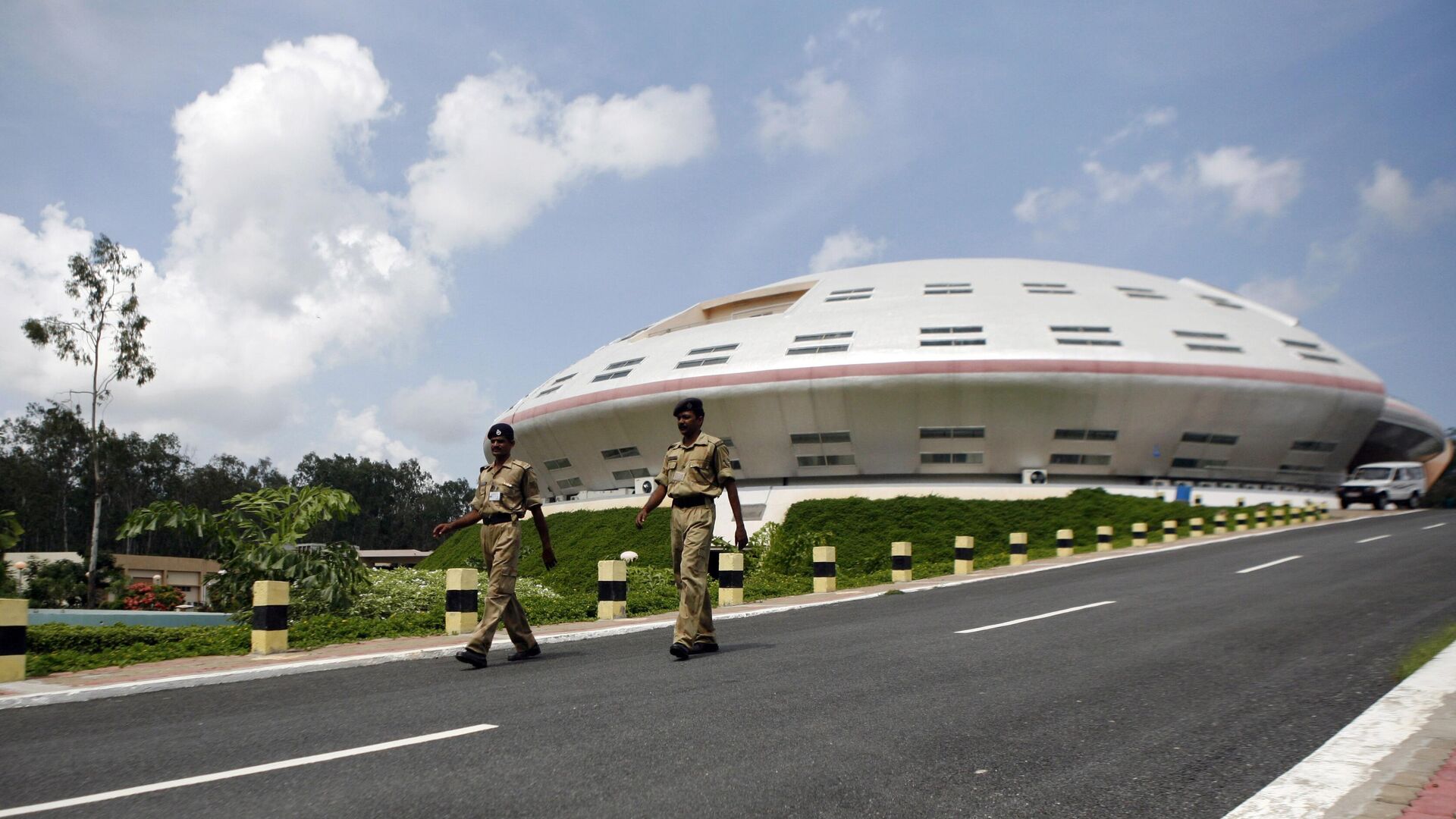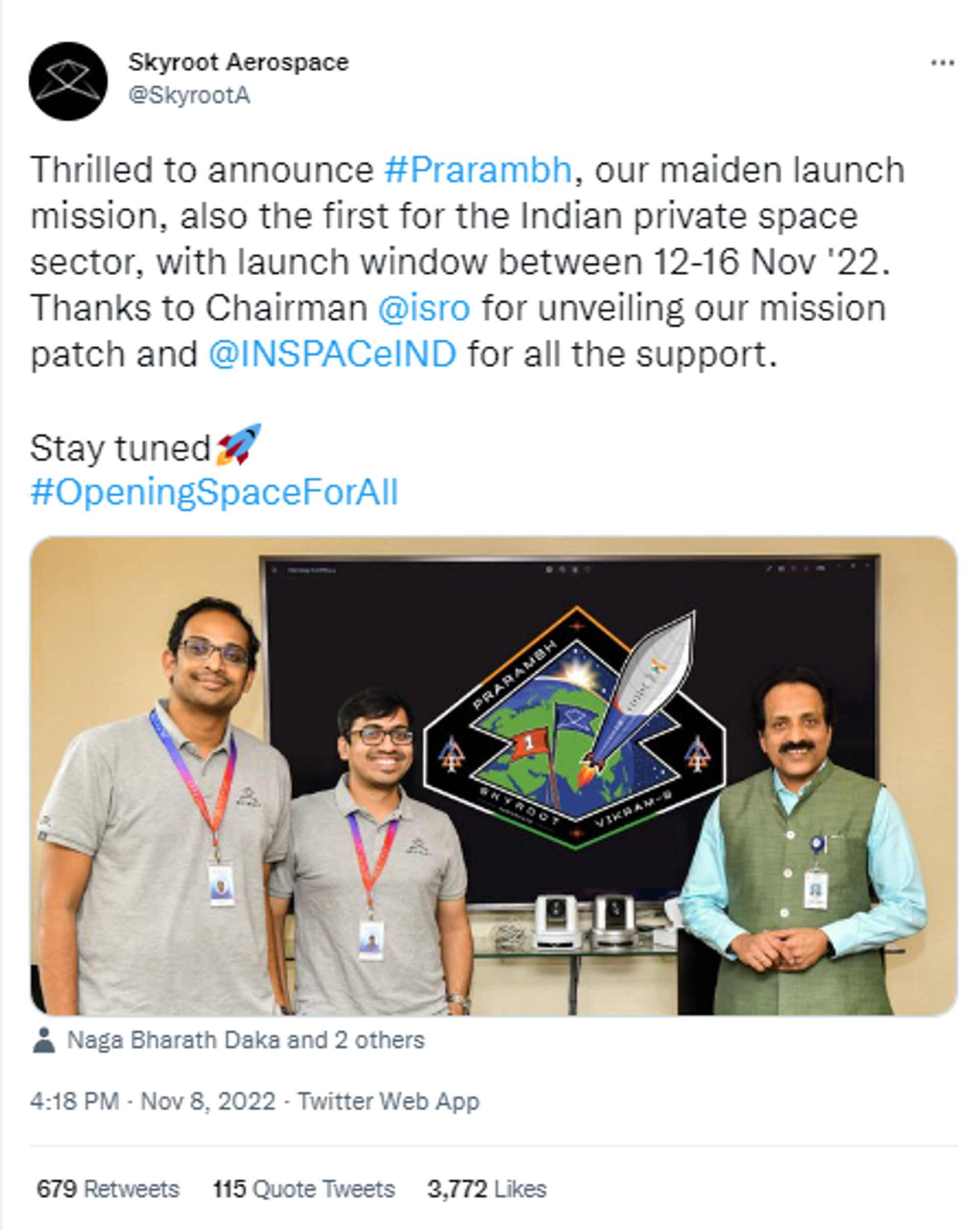Vikram-S: All You Need to Know About India's First Private Rocket

© AP Photo / Arun Sankar K
Subscribe
Prime Minister Narendra Modi launched the Indian National Center for Space Promotion and Authorization (IN-SPACe) in June to increase private companies’ participation in rocket launches. Until now, space missions had only been launched by the government-run Indian Space Research Organization (ISRO).
India will script history on Tuesday as the country's first privately-developed rocket “Vikram-S” will launch from the Indian Space Research Organization (ISRO)'s launchpad at Andhra Pradesh state's Sriharikota island.
Here is all you need to know about Vikram-S and the launch of its Prarambh (the beginning) mission ahead of its take-off.
Who Created Vikram-S?
Named after Vikram Sarabhai, the father of India's space program, the country's first private rocket was developed by a Hyderabad-based startup called Skyroot Aerospace.
In 2015, rocket scientist Naga Bharath Daka quit the ISRO to become an entrepreneur and explore space technology in the private sector.
Daka, along with his ISRO colleague Pawan Kumar Chandana, co-founded Skyroot Aerospace in 2018 to build and test privately-developed cryogenic hypergolic-liquid and solid fuel-based rocket engines.

Twitter screenshot of rocket scientists Naga Bharath Daka and Pawan Kumar Chandana, co-founded Skyroot Aerospace, along with ISRO Chairman K. Sivan
© AP Photo / Twitter
Features of Vikram-S rocket
According to Daka, the Vikram-S rocket is a single-stage sub-orbital launch vehicle that will carry three payloads of 2.5 kilograms developed by students from several countries - two from Indian customers and one from a foreign customer.
The Vikram-S rocket has been built using cryogenic hypergolic-liquid and solid fuel-based rocket engines. Its advanced composite and 3D-printing technology will help launch the rocket.
While India's first private rocket, the Vikram-S, is bracing for launch from Sriharikota with a revised window between 15 and 19 November 2022, get to know its propulsion system - the Kalam 80, successfully test fired on 15 March 2022. Stay tuned.#Prarambh #OpeningSpaceForAll pic.twitter.com/N2auqfx18W
— Skyroot Aerospace (@SkyrootA) November 13, 2022
Way Forward
Skyroot Aerospace is the first startup that has collaborated with ISRO and IN-SPACe to launch its rockets.
The launch of the Prarambh mission, Daka said, would validate the new technology, engine, and designs used by the Vikram-S rocket and demonstrate its capability to launch heavy payloads into low earth orbit.
Apart from Vikram-S, Skyroot has been developing three other variants.
Vikram-I, capable of carrying 480 kilograms of payload to low earth orbit, might have a maiden launch next year in March.
Likewise, Vikram-II is equipped to lift-off with 595 kilograms of cargo and Vikram-III can launch with 815 kg to a 500 km low inclination orbit.
#MIBePositive 🇮🇳
— Ministry of Information and Broadcasting (@MIB_India) November 12, 2022
Stories that Inspire#SkyrootAerospace: On the cusp of creating history
🔹Its maiden #MissionPrarambh to be launched in collaboration with @isro
🔹Vikram-S, India's 1️⃣st privately developed rocket🚀, set for launch from Sriharikota@ianuragthakur @IndiaDST pic.twitter.com/gU9oneRMNk

